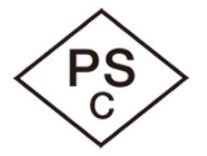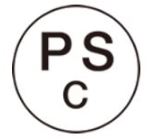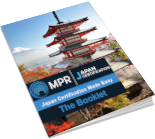your one-stop certification solution!
PSC Certification for Non-Electronic Consumer Goods in Japan
Product Safety Consumer Product Certification (PSC) is a mandatory approval for specific non-electronic consumer products in Japan. It aims to ensure the safety of products by checking mechanical stability, accident risks and chemical hazards. Unlike PSE certification, which focuses on electronic devices, PSC certification refers to non-electronic products with a particular risk potential.
Since its introduction in 1970, PSC certification has helped ensure that both domestic and imported consumer products meet Japan’s strict safety requirements and are safe for consumers and the environment. Over the years, the underlying law has been regularly updated to reflect new technologies and product categories. Accordingly, the list of affected products will be continuously expanded. The Ministry of Economy, Trade and Industry (METI) is responsible for implementing and monitoring the regulations.
Products covered by the PSC approval requirement may not be imported into or sold in Japan without valid certification. Violations of these requirements can not only lead to sales stops and product recalls, but can also result in high fines. Manufacturers and exporters should therefore check at an early stage whether PSC certification is required to ensure smooth market access.
Which products require PSC certification?
The PSC certification covers a comparatively small number of products, which can be divided into the following categories:
- Pressure cookers
- Safety helmets for vehicles
- Cots
- Climbing ropes
- Portable Laser Devices
- Hot water recirculation units for bathtubs
- Heaters without electrical components
- Lighters
- (selected) Toys
PSC Certification Process
The PSC certification process includes various requirements that vary depending on the product category. Two main categories define the process: Category A (specific products, also known as “diamond-shaped PSC” or “Diamond PSC”, after the appearance of the marking logo) and Category B (non-specific products or “round PSC” or “round PSC”).
Category A: Diamond PSC (specified products)
Products in this category are subject to the strictest requirements and a comprehensive certification process. This includes:
- Product tests that must be carried out in an accredited laboratory.
- A mandatory factory audit of the production site to ensure that manufacturing processes comply with Japanese safety standards.
- Regular follow-up audits to ensure ongoing compliance with the standards.
Category B: Round PSC (non-specified products)
For products in this category, the certification process is less complex:
- Product testing is required as part of the application.
- A factory audit, on the other hand, is not necessary.
- Once the certificate has been issued, there is no need for a regular follow-up process.
Application preparation
Submission & application review
Product tests
Factory audit (only for category A)
Issuing certificates and marking
The tests required for certification must usually be carried out in accordance with current Japanese Industry Standards (JIS).
PSC Certification Overview
| Diamond PSC (Category A) | Round PSC (Category B) |
|
| Certification period | 5-6 months (from application) | 2-4 months (from application) |
| Marking | Yes, with the diamond-shaped PSC logo | Yes, with the round PSC logo |
| Tests required? | Yes, in the accredited laboratories | Yes |
| Factory audit required? | Yes | No |
| Follow-up process | Regular follow-up audits and product testing required | Market surveillance in Japan |
PSC Marking
Products that have been successfully PSC certified must be marked with the appropriate PSC logo. For Category A products, the diamond-shaped PSC logo is mandatory, while Category B products are given the round PSC logo.
The size of the logo may be variably adapted to the product in question, but good legibility is mandatory. This also applies to the choice of the type of marking. The same requirements apply to the color design of the logo.


PSE CERTIFICATION FAQ
The process differs greatly depending on whether a product falls into category A or B. Depending on the need for separate product tests, the procedure takes about 2-4 (category B) or 5-6 months (category A). Delays can occur in particular if external documents are missing or product tests are not passed.
All METI-listed Category A and B products to be sold in Japan require the appropriate PSC marking. The overview listed above can provide manufacturers with an initial overview. In principle, however, PSC certification obligation must be clarified individually for each product.
No, the information is provided in English only rarely and with a delay by METI or the test laboratories – most announcements are made exclusively in Japanese. Applicants must independently track changes in regulations or hire a consulting firm to monitor changes so that they are reliably aware of changes that affect the compliance of their products.
Subsequent changes to products that have already been certified can affect the validity of the certificate. If there are serious modifications, such as the replacement of core components or raw materials, the conformity certification will automatically expire and the device must be treated as an unlabeled product.
MPR Services
Your One-Stop Certification Solution.
Our complete package for product certifications for Japan.
Clarification of the certification requirements
Personal consultant for all questions about PSC
Application preparation and communication with the authorities
Preparation and support for the audit
Organization of testing
Advice on how to mark your products, if needed
Complete organization of any follow-up certifications
Contact Us!
 MPR Japan Certification – expert consulting and implementation of certification projects worldwide.
MPR Japan Certification – expert consulting and implementation of certification projects worldwide.
PSC CERTIFICATION VIDEO
Please enable cookies to enable embedded YouTube videos. For privacy-related details on data exchange through use of the videos as well as changeable cookie settings, please see the privacy policy page.
Client Testimonials
Please enable cookies to enable embedded YouTube videos. For privacy-related details on data exchange through use of the videos as well as changeable cookie settings, please see the privacy policy page.







